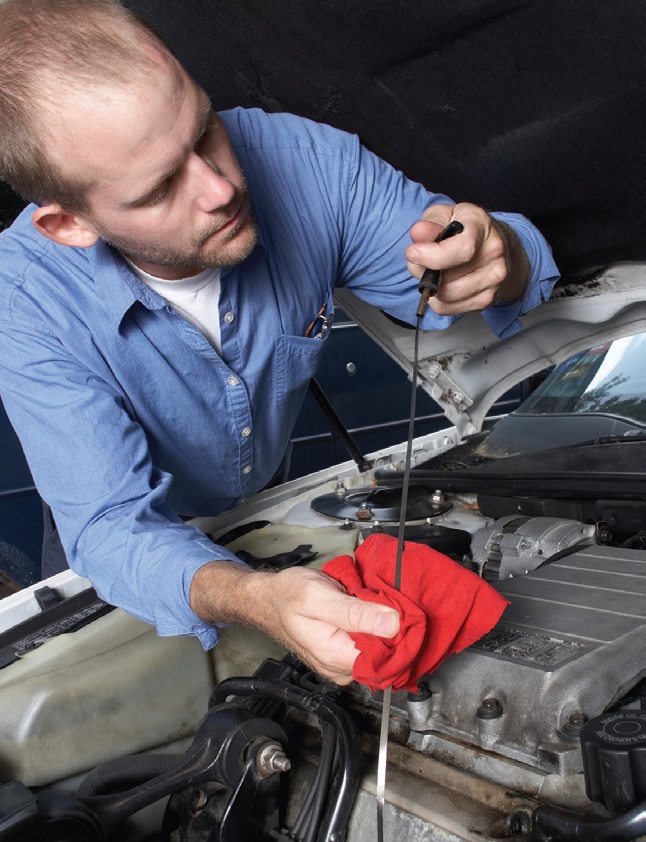Marketing vs. technology
R. David Whitby | TLT Worldwide September 2009
When developing new lubricant products, two critical factors can help increase your company’s bottom line.

Industry specification tests are intended to differentiate between acceptable and unacceptable oils, not between good and very good oils.
www.canstockphoto.com
Developing and selling new or improved lubricants depends ultimately on two critical factors: market requirements and technology implementation. If there is no market for a particular product or an oil or grease cannot be formulated and demonstrated to provide cost-effective lubrication, then the new product will not find buyers.
Unfortunately, these two factors can sometimes seem to oppose each other. Enthusiastic lubricant marketers can assume that a product that meets a user need in one circumstance will be beneficial for all other users. Dedicated lubricant formulators may develop a product that suits one group of users but resist the promotion of competitors’ products that might offer superior performance.
The
June Lube Report, published by
Lubes ‘N’ Greases, reported that BP America had agreed to modify or discontinue disputed advertising for Castrol GTX motor oil. A U.S. National Advertising Review Board (NARB) panel recommended Castrol withdraw a variety of sludge protection superiority claims in all media, following a challenge by Pennzoil-Quaker State.
NARB panel reports are only available to subscribers, but
Lube Report reported that Castrol television advertising claimed, “Castrol GTX passed the industry’s toughest sludge standard and is 57% better.” BP had relied on the results of two tests: Castrol GTX and a competitive Pennzoil product conducted using the Mercedes-Benz M111 sludge test, which is run in an M271 engine. The M111 sludge test is part of the ACEA European automotive industry specifications for gasoline and light-duty diesel engine oils.
The NARB panel indicated that, in addition to relying on a European industry standard in advertising directed to North American consumers, BP did not submit evidence to establish the M111 test was “tougher” than all other industry sludge standards. Additionally, the information submitted by BP did not demonstrate that the M271 engine is an appropriate basis for comparative sludge protection claims.
The test procedures and protocols are not publicly available, as there is no published reference data with respect to the M271 engine, no correlation to other tests, no field correlation, no published repeatability or reproducibility statistics and no way to evaluate the statistical significance of the test results, according to the NARB panel.
According to
Lube Report, although BP respectfully disagreed with the panel’s conclusions, as a strong supporter of the self-regulatory process, BP Lubricants agreed to withdraw the challenged advertising. BP had submitted that engine sludge should be an important concern for consumers and that car makers and many others in the industry believe minimum standards for sludge protection don’t go far enough.
It’s important for lubricant formulators and marketers to remember that industry specification tests are intended to differentiate between acceptable and unacceptable oils, not between good and very good oils, particularly in engine tests, which can give variable results. It’s possible that the Pennzoil product tested in the M271 engine had not been formulated to meet the ACEA specifications. It’s also possible that Castrol GTX may provide superior sludge protection, but BP could not prove the oil was 57% better on the basis of just two test results.
Perhaps BP marketers should have been more careful to target marketing claims about Castrol GTX to U.S. owners of European cars that would benefit from ACEA specification engine oils. Conversely, perhaps Shell engine oil formulators should be ready to introduce products in the U.S. that meet ACEA specifications so that Pennzoil-Quaker State is able to match Castrol in the U.S. market. As fuel economy and emissions limits progressively tighten, U.S. cars are likely to become more European and Japanese in character.
This example illustrates the importance of lubricant formulators being closely attuned to market requirements and lubricant marketers being very aware of the limitations of product development, testing and performance. Better lubricants result from an effective combination of marketing and technology.
 David Whitby is chief executive of Pathmaster Marketing Ltd. in Surrey, England. You can contact him at pathmaster@dial.pipex.com
David Whitby is chief executive of Pathmaster Marketing Ltd. in Surrey, England. You can contact him at pathmaster@dial.pipex.com.